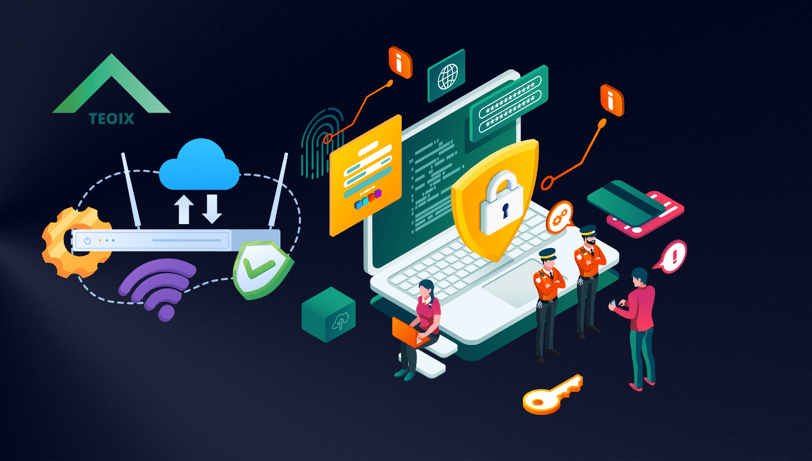Data Security vs. Network Security: Understanding the Distinctions and Interplay
SECURITY
5/18/20243 min read


Information security is critical for businesses worldwide in the connected digital world of today. Network security and data security are the two main facets of this protection. Despite their frequent interchangeability, these phrases relate to distinct but related fields within cybersecurity. Creating a strong defense against cyber attacks requires an understanding of the differences and interactions between network security and data security.
Data Security: What Is It?
Data security refers to the procedures and safeguards implemented to keep information safe against theft, corruption, and unwanted access during its whole existence. This includes data in use (actively processed data), data in transit (transferring between systems), and data at rest (stored data).
Important Data Security Aspects:
Encryption:
Encryption is a fundamental component of data security that renders data unintelligible to unauthorized users. It makes sure that data cannot be decrypted without the right decryption key, even if it is intercepted or accessed illegally.
Strictly implementing access restrictions guarantees that only systems or people with permission can access particular data. Role-based access control (RBAC) is one such system that does this by granting access permissions to users based on their roles within an organization.
Data Masking and Anonymization:
These methods disguise sensitive information from possible attackers while preserving its use for authorized reasons. They do this by changing the look of the data or removing any personal identification.
Data Backup and Recovery:
In order to guard against data loss due to hardware malfunctions, cyberattacks, or other calamities, it is essential to regularly backup your data and have reliable recovery procedures in place.
Compliance and Auditing:
Processing data in accordance with industry standards is ensured by following legal and regulatory regulations (e.g., GDPR, HIPAA, or CCPA), and periodic audits assist in identifying and mitigating potential vulnerabilities.
What is Network Security?
The employment of both software and hardware methods to safeguard the accessibility, integrity, and confidentiality of computer networks and data is known as network security. Its main objective is to defend the network infrastructure from various online dangers, such as hacking, illegal access, and data breaches.
Important Network Security Aspects:
Firewalls:
Firewalls are essential elements that monitor and regulate incoming and outgoing network traffic in accordance with preset security standards. They serve as barriers between trusted and untrusted networks.
Intrusion Detection and Prevention Systems (IDPS):
These systems watch network traffic for unusual activity and possible threats. If they notice anything unusual, they notify administrators and sometimes take preventative action by blocking harmful activity.
Virtual Private Networks (VPNs):
By encrypting data transferred between devices and networks, VPNs offer secure connections across the internet, guaranteeing privacy and security against eavesdropping.
Anti-virus and anti-malware software:
By identifying and eliminating dangerous software from the network, these technologies help stop malware infestations and lessen possible harm.
Network Access Control (NAC):
NAC solutions make sure that only compliant and secure devices are allowed access to the network by enforcing security policies on devices that try to access it.
Differentiating Between Network Security and Data Security
Information protection is the goal of both network security and data security, although they approach the task differently and at separate levels.
Scope:
Regardless of the location or mode of transmission, data security is primarily concerned with safeguarding the data itself. Conversely, network security pertains to safeguarding the fundamental network infrastructure that enables data transfer and interconnectivity.
Techniques and Tools:
While network security depends on firewalls, IDPS, VPNs, and anti-malware software, data security mostly on encryption, access controls, and data masking.
Threats Addressed:
The goal of data security is to stop theft, illegal access to private data, and data breaches. Threats including denial-of-service assaults, malware infections on networks, and unauthorized network access are all covered under network security.
Data Security and Network Security Interaction
To offer complete protection, effective cybersecurity methods frequently incorporate both network security and data security measures. This is how they enhance one another.
Layered Defense:
Organizations build a layered defense strategy by fusing network security with data security. For instance, encrypted data can pass across a network that is guarded, offering several levels of defense against various dangers.
Incident Response:
Having strong network security measures in place can aid in swiftly identifying and containing a breach, while data security safeguards guarantee that any data that is intercepted is kept safe.
Regulatory Compliance:
A lot of laws demand that network and data security procedures be used in tandem. For example, GDPR requires network security controls like firewalls and monitoring in addition to data protection measures like encryption.
In summary
Within the larger topic of cybersecurity, the disciplines of data security and network security are separate but interconnected. While network security protects the infrastructure used to transport and store data, data security concentrates on safeguarding the data itself. For enterprises hoping to protect themselves from a constantly changing array of cyberthreats, it is imperative that they comprehend the distinct functions and complementary nature of these security measures. Through the integration of data and network security practices, enterprises may construct a strong and resilient defense system that guarantees the availability, confidentiality, and integrity of their vital data.


